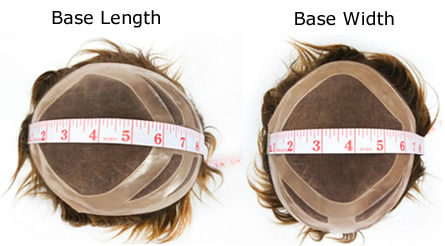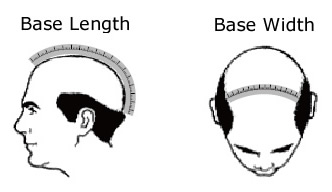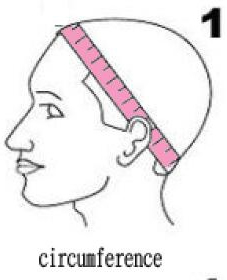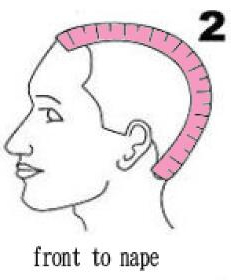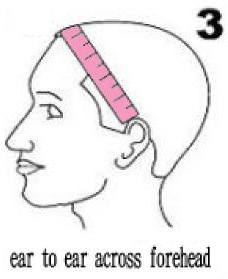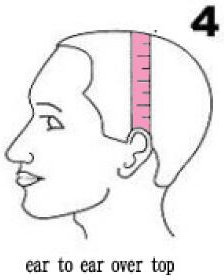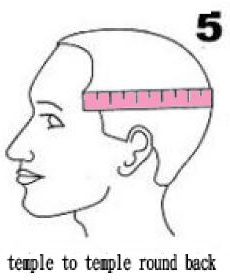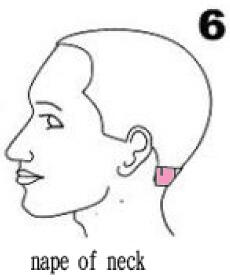Base size is the size of the cap of a hair system. We roughly separate them into 4 types:
- Partial size: hair loss areas equals or is smaller than 4" x 4".
- Regular size: hair loss area with size larger than 4"x 4" and up to 10"x 8" (or within 80 square inches of total area).
- Oversize (or larger size): hair loss area larger than 10" x 8" and up to 10" x 10".
- Full cap: hair loss areas larger than 10" x 10".
Partial size:
Cover hair loss areas equals or is smaller than 4" x 4". In the early stages of hair loss some clients only experience hair loss is isolated areas, i.e. the front hairline or crown area as shown in the illustration below.
In these situations, a partial (smaller) system would be the most appropriate choice as the partial system could be fitted to the smaller hair loss area and blended with the clients existing hair.
Sending in a template or spare system is helpful for us to examine the pattern, size and scalp curvature of your bald area so that we can follow these details exactly when making your customized system.
If you prefer not to send us a template or a spare system, you need to take the measurements of both the base length and width and we will make your system base on a regular scalp curvature.
When you send us a template, please be reminded to mark your hair direction with a permanent marker pen on the template. It is VERY IMPORTANT for us to make your system with the correct hair direction.
Regular size:
Hair loss area with a size larger than 4”x4” and up to 10”x8”. It is the most popular option for men with traditional male pattern baldness and covers the hair loss area on the top of the head from the front hairline to the crown as shown in the illustration below.
You may also either send us a template (or your old system) or select the exact measurements of your system base.
Over size( large size or 3/4 cap):
Hair loss area larger than 10” x 8” and up to 10” x 10” covering the head from the front hair line to back of head. A Cap does not have a temple (side burn) area or nape area. The hair loss area extends further down the side and back of the head. Please refer to the illustration below.
Again, send in your template or clearly describe the measurements of your base length and width.
Full cap:
Full cap hair systems are most common with women or men who have complete hair loss( It is the best choice for chemotherapy patients who suffer severe hair loss) or prefer total coverage of the scalp. These full cap hair systems cover your entire head and most times even include side burns and nape areas. The cap size is larger than 10”x10”.
How to measure?
Follow the instructions below to measure a partial size, regular size or larger size:
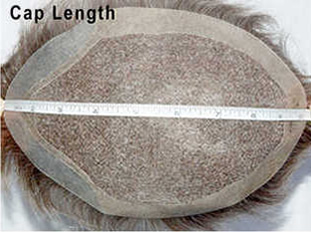
Place the tape at the center of front hairline,Measure directly across the middle of the base to the back edge.
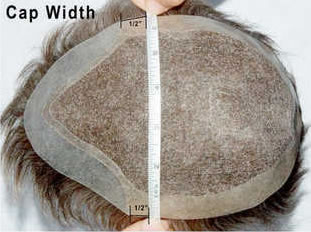
Place tape at one side edge of the base,the begining point should be 1/2" distance from the temple point,then go up across the top to the opposite edge(also 1/2" back from the temple point).
Measure a full cap:







